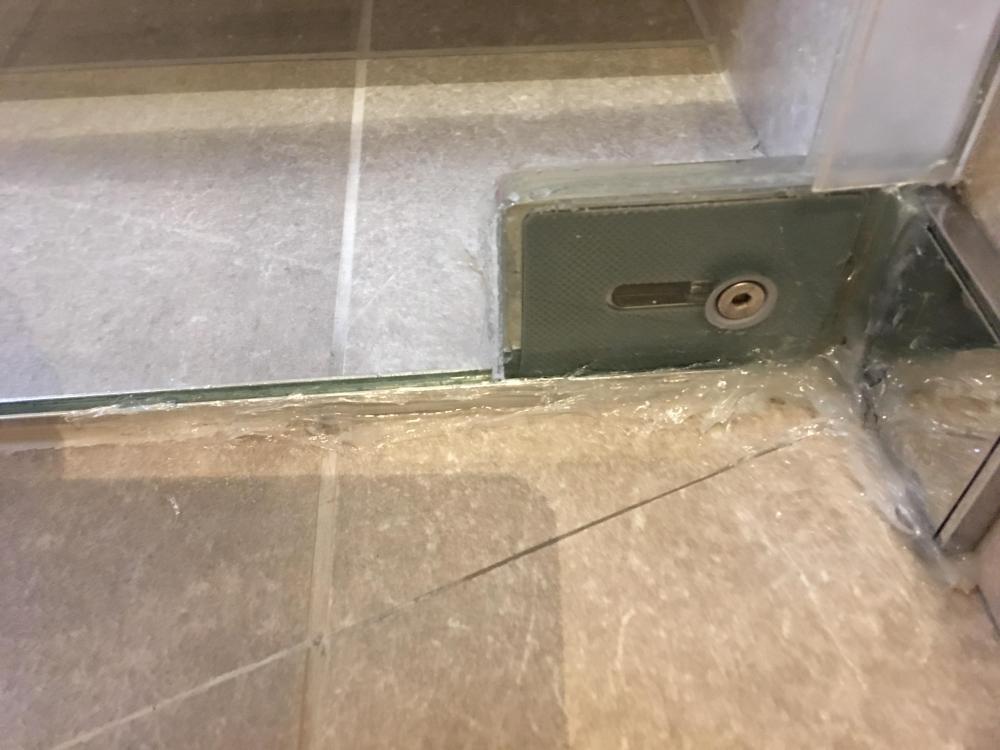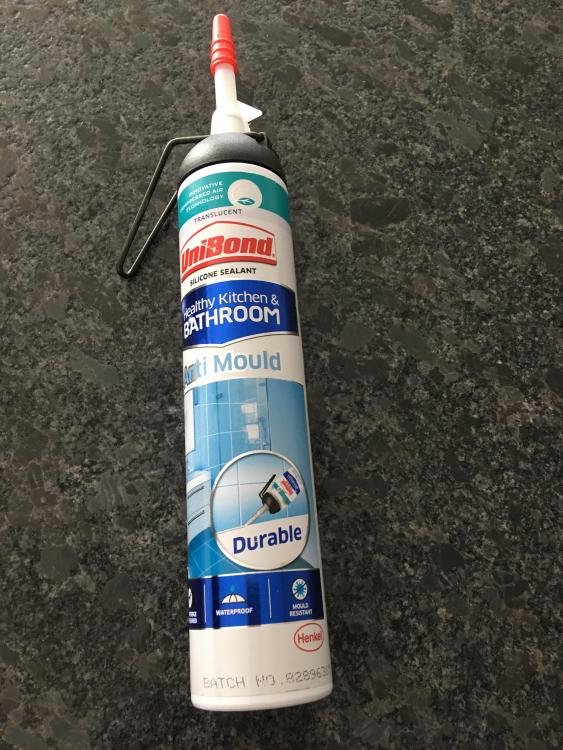Leaderboard
Popular Content
Showing content with the highest reputation on 02/17/19 in all areas
-
The Timber Frame company arrived on site on a very wet mid-January morning. Very quickly wagon loads of components started to arrive and before long every space around the slab and up the drive was dotted with Ikea style flat packs, assorted timber and steelwork. The first job was to floor out over the basement to form a flat working platform for the main house erection. The original specification called for pre-stressed concrete floor panels, these were changed to Posi-joist, as this gave us space within the joist to locate services, ducting, electrics and waste etc. With the basement floor in place, the sole plate was positioned, levelled and fixed ready to attach the wall panels. With every panel, piece of timber, beam and noggin precut in the factory and numbered and with a full set of drawings, the house started to take shape quickly. Four weeks later and the roof timbers were in place and the next job is to fit the roof.6 points
-
Paul Camelli's experience with his (very definitely not "Mickey Mouse") hydro installation, plus that of his neighbours at the Old Schoolhouse, Torran, seems to indicate that small turbines of around 500 W can be very useful and reliable long-term ways of providing constant power to an off-grid house. His has been running for several years now (I gave the link earlier). As mentioned by @Miek, 500 W of continuous generation is 12 kWh per day, enough to meet the needs of an off-grid house that has heating and hot water provided by another means.3 points
-
2 points
-
You're still getting this wrong. Please have a read of this. I agree with the others, 500 W continuously, even if only during the winter, would be very valuable. It would reduce the size of both batteries and PV required significantly and mean so much less generator use that you could get away with a relatively cheap petrol or LPG one rather than needing a beefier diesel.2 points
-
Having done a large renovation project and turned an old 1770s vintage wreek into a fantastic Home we decided that living in Cheshire was no longer for us, so we sold up and moved, to be closer to family in the Southern Lake District. However the journey was far far from straightforward, we really had no idea what we were looking for, was it to be another renovation project or a self Build? Having viewed around fifty ‘oportunities’ ranging from dilapidated houses, to an old pub, to a closed garden centre, we gave up!! Then about six weeks after ‘giving up’ Debbie had to come clean, she’d not actually given up, but had been searching online and she thought she’d found what we were looking for. So we arranged to view a rather sad looking dormer bungalow on a very wet, cold and overcast March day. Once into the property we both realised this was the one! So we bought it and moved in. Having lived in the property for a year it was clear that this wasn’t a renovation job, so the bungalow had to go. The next step was to decide what to replace it with. Although we had it in mind to downsize we missed the larger rooms of our previous home and. According to my interior designer (Debbie) we needed larger rooms so our furniture would fit.... Living in the old bungalow made it obvious it was the wrong way round, the two bathrooms and the bedrooms had the best views. Also because of the shape of the plot, an L shaped house would make the best of the space and the views. Once we had our requirements clear, a design brief was produced and a local Architect appointed. A series of design options were produced and after some tweaking, final plans drawn and planning permission sought. Prior to the submission of the planning application we walked round our neighbours with the plans, this gave us an opportunity to gauge their response, in most cases it was ‘interest’ and nothing more. Thankfully the planning application went through without any opposition. So here is the design.1 point
-
Like all Self builders we found we had a limited number of options for living accommodation during the build, given that we needed to demolish the bungalow to clear the plot for the build. The options were, rent locally or a caravan on site. Renting locally wasn’t an option due to the high rental costs, so we looked at the caravan option. The main problem was access, an 8 feet wide drive with a hairpin bend half way up, a dry stone wall, 80 feet tall trees and limestone outcrop put paid to that idea. A local crane company visited the site to look at the feasibility of craning the caravan over the trees, the narrowness of the road, a road closure and 4 mile diversionary routes for vehicles, a licence from the local authority soon put paid to that idea. Then a brief conversation with a neighbour and a lightbulb moment, we can up with the idea of a timber framed tiny house built in an orchard that formed part of the plot. The day before submission of the planning application a sketch of a small 7 x 5m cabin was added to one of the drawings. Thankfully we got planning approval. The construction of the cabin allowed us to practice our woodworking, insulation and other construction and trade skills. This is where we currently live. This what it looks like on a wet autumn day. Not the power cable over sailing the cabin. Happily the DNO installed taller poles to increase the clearance.1 point
-
Favoured by kids and red wine drinkers everywhere are the newest cute potato powder snacks Pombears or even Pom-Bear! However as in the Makita v Workzone or Bosch v Titan tool stakes we have a new entrant to the salty snack monopoly dominated by KP foods... Arise Teddy Faces from Teutonic discounters ALDIIn a cunningly different but well *similar* pack, the Snackrite design team won’t fool the kids but.... taste test results are in! and the cheapos are better in every way but does how does one construct a taste test challenge when the fuckers are different shapes...and you should not waste pricy Rioja on small people as it’s bad economics And might be illegal (not in Scotland where you can give wine to 7 year olds) in some countries in the UK. in this unscientific trial the winner is the big bear faces...well done ALDI!1 point
-
1 point
-
Wouldn't it better to wait an hour? It looks like the reading is about an extra 300 litres per day so around 12 litres per hour so to see it for sure on a meter working in 10 litre units…1 point
-
@newhome this is my latest one. It has a built in applicator which is ‘easy’ to use, well it is easy compared to a gun and I practiced on cardboard for a few days and did really well but it went to pot when I got onto the job proper. I used clear for mine as that is best in the location I have. I saw the £80 lot used cheapest screwies stuff although it was clear as I had specified it had to be clear. Such a small job has turned into a mammoth task feel so bloody useless!1 point
-
You would also be better using a hot+cold fill washing machine and dishwasher, but even 12 kWh / day is not to be sneezed at. With PV + micro hydro + battery, the number of times that you'd need to fall back to using a generator would be very small.1 point
-
The point is I can't measure flow. My hole and "height of fountain" is a crude measure of pressure, but not flow. Thinking about it more, if I did get a big fountain at the top that would be a sign of a blockage in the field, but I don't get high pressure there, so it must be flowing freely into the soakaway? There won't be plough damage in our garden, and I am 100% certain the entire soakaway is well below plough level.1 point
-
Is there any way you can do a crude test to see what sort of head the pump can deliver? Perhaps pointing a (restricted) pipe up vertically to see how high it will raise a fountain might give an indication of how well it performs with the outlet restricted?1 point
-
We used up-and-over wall units above our work surfaces and we think that they work well. A variant of what @cherryfountain suggests we used a local Wickes kitchen designer face-to-face, and he did a very good job. Their configuration software makes sure that you order all of the right bits and pieces. They also supplied everything and at a competitive price. We also tried a more up-market company, but went with Wickes in the end. I suspect there is little to choose between any of the budget kitchen providers. As far as I know everyone uses the same suppliers for carcasses hinge furniture, etc. So there is little to choose between them, I feel. The main variant in terms of quality is the kitchen fitters, and in our case we fitted the kitchen ourselves so that wasn't an issue: I am a pretty good woodworker and very fastidious, so we knew we would get the fitting that we would want.1 point
-
Mine all those years ago (early 1990's) had a positive displacement pump, that just pulled oil up from the tank. It worked fine, but did need to be run for a while during commissioning to pull oil through for the first time. It also needed good joints on the feed pipe, as I remember having a problem initially with a joint that was oil-tight, but which allowed air to be sucked in (the boiler didn't have either a return pipe or tiger loop fitted).1 point
-
Nothing really. They may well have a heat exchanger that's optimised fro higher flow rates and a higher flow to return temperature differential, but without looking at one and playing with it it would be hard to be definitive about how it might behave running something like UFH. One point worth noting is that pool ASHPs don't modulate, they are designed to run flat out all the time. That means they probably aren't going to be as quiet or efficient running something like UFH as an inverter driven unit.1 point
-
Sounds like you have a couple of options. You’ve talked about a Rayburn - is that existing currently and what fuel ..? It’s an existing build - is it being replaced or are you looking at improving or extending it ..? In line with what @Ed Davies has said, I’d look at using mains rather than DC, but also if you have a “power house” location then I would combine everything there. Batteries, generator, PV and hydro feeds and then feed this via a single SWA cable to the house. In terms of heating oil, there is nothing stopping you moving the oil yourself when it’s been delivered - I’ve seen on one farm an oil line that’s inside an MDPE pipe buried across the yard and it pumps uphill to the house about 120m away. The house has a separate 250 litre oil tank and there is just a simple timer and float switch from memory that activates the oil pump from the lower tank.1 point
-
I originally looked at a single large unit and they are available, the issue is the 250mm connections, going to the outside with that size and then splitting it into 2 and then into your plenums, you will need 2 plenums each for supply and extract for a house that size, I have a pair for downstairs and a pair for upstairs. The issue at running these units at these speeds is noise and efficiency. At full tilt they do make noise that will then be transmitted through the ducts to some extent, and if you look at the details they are far more efficient (heat exchange) at around 50-60%. PassiveHaus specifications don't allow them to run at those speeds, a PH certified unit has a lower PH capacity that it's absolute capacity. My Brink Renovent 400's run at 140 and 175 m3/h respectively, they are capable of 400 m3/h but as you go above 200m3/h they start to become audible.1 point
-
Well, I'm new to all this so at this and can't provide any authoritative advice and found your post very useful, thank you for a good piece of work. The soil was removed in preparation for the raft so is in effect footings rather than site clearance. I had an online chat session with HMRC which I've saved. Our muckaway got split down two routes, one using our builder, so through their accounts and the residual with a local grab lorry firm. I must say I find the whole VAT business rather intimidating and am trying to make sure I keep good records and don't fall foul of any rules.1 point
-
I had a similar problem, 472m2 floor area, which gives an extract rate of 131.37 l/s or 472.92 m3/h. I have 2 x MVHR units both running well below max as this reduces noise and increases heat exchange efficiency. My system was designed (by myself) at 495 m3/h to comply with building regs but I run it at about 316 m3/h and that more than copes with the house and is probably still quite high. My system auto boosts back up to the higher rate or even high 570m3/h based on the RH sensors in the extract ducts and these work well detecting shower usage. Layout I used the Ubbink system with 180mm rigid ducting between MVHR units and the outside/plenum boxes and 90/75mm (Outside/Inside) semi rigid elswhere. The kitchen has two extract terminals each with two ducts, everywhere else I used single ducts to terminals, though wet rooms have two extract terminals and bedrooms two supply terminals. This was to keep velocities down. The whole system is silent though you can hear the MVHR units in the plant room when at the Building Regs speed, but at the normal running speed nothing.1 point
-
It is what it is now, but I don't think so....I have 122mm wide posijoists at 400mm centres either side of the steels and they're not aligned webs due to the house being curved. heyho!1 point
-
When I saw the title of those two pictures, I had to scroll down oh so carefully in fear of what I might see.1 point
-
Since the last blog entry we've been working away at co-coordinating the paperwork for the building warrant . But progress is slowly being made. Last week we heard we've been lucky enough to get a 50% grant towards our grid connection costs, which is a big help. Anyone else who's thinking of applying, feel free to get in touch if you want to know more about it. I think you need to sit within SSE's (North Scotland) area. As part of our build we're removing quite a few conifers, the condition being that we replant with a load of native trees. One of the constraints on this is that the conifers sit quite close to a HV line, in particular within what the DNO call the red zone (where if the tree went the wrong way it would hit the line). For a while it was a bit difficult trying to figure out how we'd get these down, but in the end we were lucky enough to take advantage of a line shutdown by the DNO a couple of weeks ago. So now most of the conifers are down (only a few remaining), we just need to get them extracted. In other tree related news, we also arranged to mill a few of the hardwoods that were felled a year or so ago. Pretty pleased with the results, these will now air-dry and then probably need putting in a kiln just before we use them. Action shot of SWMBO taking it out on a tree: The aftermath: Logs ready to mill: And some of the results:1 point
-
You can get a free copy of FSAP from here: https://www.stromamembers.co.uk/downloads/fsap2012/publish.htm1 point
-
Here's that link to HOT2000: https://www.nrcan.gc.ca/energy/efficiency/housing/home-improvements/177251 point
-
0 points
-
0 points
This leaderboard is set to London/GMT+01:00












